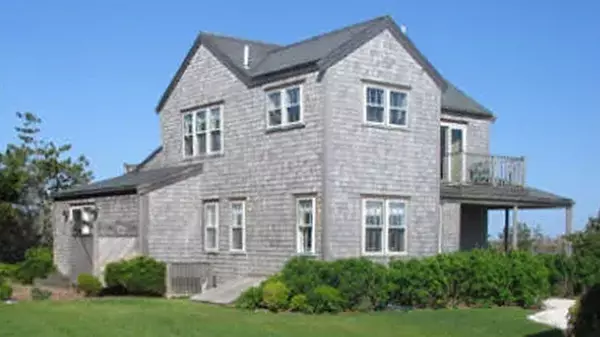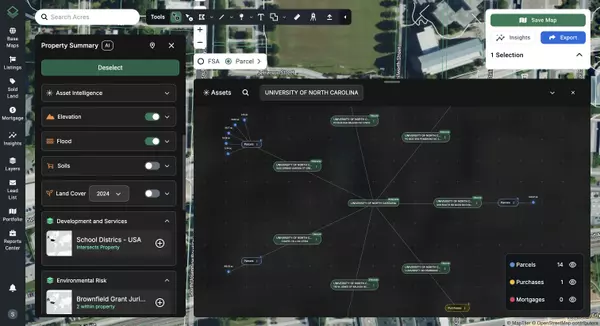Florida Lawmakers Are Locked in a Property Tax Battle—We Rank the Plans and the Relief They Offer
Florida’s leaders are locked in a standoff over how far to go in cutting property taxes, in a game of political brinksmanship that could leave Floridians with no relief at all.
The Sunshine State ranks 30th in the nation for property tax burden, according to research from the Tax Foundation. It's a striking position given that the state doesn’t have an income tax. By comparison, Texas—another state without income tax—ranks seventh.
But the state’s rapid home appreciation, population growth, and need for improved public services have driven some of the steepest hikes in the nation. Those sudden spikes have left homeowners hurting, and legislators have taken notice.
Currently, there are seven proposed constitutional amendments and one statutory bill that could rewrite the state’s fiscal foundation and change how much homeowners pay or save each year.
But the sheer number of relief options is no reason to cheer, according to Republican Gov. Ron DeSantis.
“Placing more than one property tax measure on the ballot represents an attempt to kill anything on property taxes,” he said in a post on X. “It’s a political game, not a serious attempt to get it done for the people.”
He has a point. Political strategy has long warned against splitting the vote by pitting like-minded candidates or proposals against each other. For a proposed constitutional amendment to become law, it requires 60% of voter approval—and if all the initiatives make it to the ballot in November, their similarities could weaken support for any one proposal to pass.
House Speaker Daniel Perez, a Republican, who is backing multiple proposals, defended the multipronged approach: “If we have faith in the voters to elect us, we should not be afraid to let them be a part of the conversation about the taxes they pay,” he said in a memo announcing the plans.
But not all tax relief is created equal. Some measures promise dramatic short-term savings, while others are more measured and financially sustainable. So which plans truly help homeowners—and which could cost more than they save?
How we ranked them
We ranked Florida’s eight property tax proposals from the least to the most fiscal relief for homeowners, focusing on the scope and immediacy of the cuts—not their long-term sustainability. If the ranking were based on fiscal stability, experts say, the order would reverse entirely.
That’s because dramatic cuts will just as dramatically sink revenue for the services that property taxes pay for, such as public safety, roads, schools, and more.
As real estate and tax attorney and CPA Chad Cummings put it, “Unless we want to be driving around with huge holes in the road, it’s just not realistic. It’s all fantasy.”
It’s unclear how the state would compensate localities for the lost revenue—raising the sales tax, increasing taxes on second homes, or pursuing another avenue—but it's an important caveat for voters to consider as they head to the ballot box, Cummings says.
HB 215: Minimal short-term relief with maximum sustainability
Unlike the other seven proposals, HB 215 isn’t a constitutional amendment but a statutory bill. That means lawmakers could pass it without waiting for a statewide vote. The measure would require a two-thirds majority for any local government to raise millage rates and would allow married couples to combine their homestead exemptions for up to $500,000 in protected value.
“HB 215 is a statutory bill, so it does not require voter approval. ... Instead of slashing the nonschool property taxes altogether, it simply puts more curbs and guardrails on future increases. That is the most sustainable proposal out of all of them,” Cummings says.
The tightening of controls on future tax hikes without undermining local budgets is what makes it more fiscally responsible in the eyes of advocates. But its very restraint makes it the least politically flashy, attracting little media attention compared with the sweeping abolition plans making headlines.
HJR 213: Modest relief with strong guardrails
HJR 213 would simply slow the pace of assessed value increases, capping growth at 3% every three years instead of 3% annually.
“It slows the assessment growth cap, but there's no outright exemption,” explains Cummings. “It offers protection against sharp increases, but you're still going to have increases.”
Another way to think of it is as a recalibration rather than a major reform, protecting homeowners from sudden spikes while preserving steady revenue for counties. It may be unlikely to deliver eye-popping savings, but it could offer more relief in the long term because it’s more fiscally responsible compared with more sweeping cuts, which may have to be remedied with large hikes down the line.
HJR 211: Limited relief for movers and upgraders
HJR 211 would expand Florida’s Save Our Homes program by removing the cap on portability, allowing homeowners to transfer the full amount of their accumulated tax savings when moving to a new property.
The measure would mainly benefit wealthier or long-term homeowners who have built up substantial equity and are looking to move or upgrade. For renters and first-time buyers, the proposal offers little direct relief.
HJR 209: Conditional relief for insured homeowners
HJR 209 would create a $100,000 nonschool property tax exemption, but only for homeowners who maintain full property insurance coverage—an interesting caveat given that insurance has become its own affordability crisis in the state.
Florida homeowners pay some of the highest insurance costs in the country, and a staggering 20% of residents don’t have homeowners insurance as a result. As such, this proposal risks compounding crises for homeowners who can't afford insurance or their property taxes.
In another curveball, the exemption would not apply to the portion of a homeowner's property tax that goes toward funding schools, which accounts for as much as 60% of revenue generated from property taxes, according to research from the Florida Policy Institute. That caveat could mute just how much homeowners save—and it’s one baked into most of the current proposals.
HJR 207: Moderate relief with broad reach
HJR 207 would create a nonschool property tax exemption equal to 25% of a home’s assessed value, providing widespread but limited savings to homeowners across the state. It’s a similar proposal to HJR 209, but without the insurance requirement.
Interestingly, the proportional 25% exemption would pencil out to about the same, given that a median-priced home in Florida currently sits around $425,000, according to Realtor.com® data. But it has the potential to offer more flexibility as home values rise in value over time. Without that flexibility, a fixed-dollar amount exemption risks becoming obsolete due to inflation.
HJR 205: Targeted relief for seniors
HJR 205 would grant a full nonschool property tax exemption to homeowners aged 65 and older, carving out the state’s largest and most politically active voting bloc for targeted relief. But it runs the risk of creating a lock-in effect.
“Senior-targeted homestead relief (and especially assessment caps) lowers the carrying cost of staying put, which reduces mobility and discourages downsizing,” explains Realtor.com senior economic research analyst Hannah Jones. “Portability policies can soften, but likely won't erase, that lock-in.”
Still, seniors have been hit hard by rising property taxes as fixed incomes have failed to keep pace with inflation. In the past year, property tax bills in Florida have increased 2.6%, while utilities have spiked by 4.5%. Meanwhile, the 2026 cost-of-living adjustment for Social Security beneficiaries is only 2.8%, underlining just how vulnerable this population is to rising housing costs.
HJR 203: Major relief but slow phase-in
HJR 203 proposes a gradual elimination of nonschool homestead property taxes over a 10-year period, increasing the exemption by $100,000 per year until the taxes disappear entirely.
After nearly a year of advocating for the elimination of property taxes, the governor and other state leaders may be closer to their goal with this bill. But it offers a phase-in over a decade to allow local and state governments to find new revenue streams.
While it’s a more moderate proposal compared to HJR 201, discussed below, Cummings cautions that the long runway won’t prevent the inevitable funding squeeze.
“Removing nonschool property taxes could shift the burden to renters through higher consumption taxes,” he says.
Put simply, even phased in slowly, the proposal would likely drain local revenue bases over time, forcing counties to raise sales taxes or cut essential services to fill the gap.
HJR 201: Most relief but the least sustainable
The most sweeping and politically potent proposal, HJR 201 would abolish all nonschool property taxes on homesteads starting on Jan. 1, 2027.
It embodies the bold, headline-grabbing promise that appeals to voters, but with an enormous price tag.
“Eliminating property taxes on homesteads will destabilize local government funding in rural counties,” explains Cummings. “These counties will be forced to either slash basic services or dramatically raise sales taxes, which disproportionately burden low-income residents.”
It’s that instability that makes some skeptical of whether or not the relief would last even if it does pass a voter referendum.
“This is a short-term play for optics, for politics. ... I don't see it lasting for more than a couple of years,” Cummings says.
It’s also worth noting that similar proposals have largely failed with voters. In 2024, North Dakota voters rejected a similar ballot measure by a resounding 63%.
What happens next
Even before any of the measures pass, Florida’s financial system is already bracing for impact.
"Bondholders, pension funds, and municipal insurers are quietly reassessing risk exposure. ... If Florida amends its Constitution to limit or eliminate homesteaded property taxes, these parties will likely reprice municipal bonds, downgrade credit ratings, or impose stricter covenants,” says Cummings.
That uncertainty alone could ripple through the state’s economy.
“The mere possibility of tax elimination introduces modeling uncertainty, which increases financing costs even if the proposal fails. ... These changes will echo for generations to come,” he adds.
All seven constitutional resolutions will need 60% approval in both chambers of the Legislature and from voters in 2026. That’s a high bar—and with so many competing proposals, it's unclear if any one proposal will gain enough momentum to pass, which could be the riskiest result.
Just consider Walter and Debbie.
After investing in major repairs for their Florida home, a reassessment turned their $15,000 annual tax bill into more than $90,000—an amount that could force them to sell the home they’d spent a lifetime building.
For homeowners like them, stalled reforms or conflicting ballot measures are the difference between keeping or losing a home. If Florida’s competing property tax plans cancel one another out, families like theirs will just keep paying the price for a system everyone agrees is broken, but no one can agree on how to fix.
Categories
Recent Posts










GET MORE INFORMATION

Stevan Stanisic
Real Estate Advisor | License ID: SL3518131
Real Estate Advisor License ID: SL3518131
